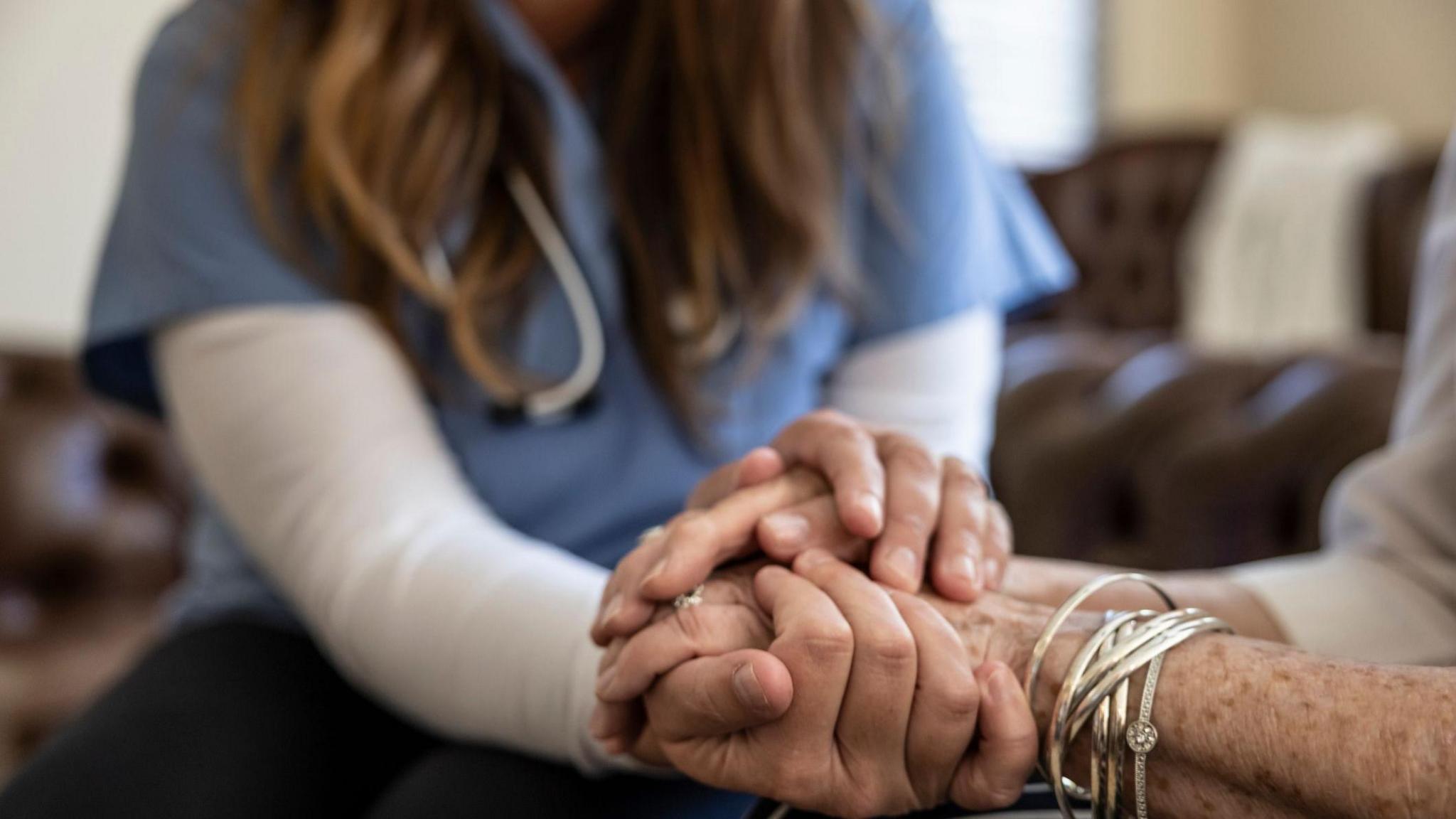Half of stroke patients do not get the right care - report

- Published
Only around half of the 11,000 Scots who had a stroke last year got access to the appropriate treatment they needed, new data shows.
Measures such as giving patients aspirin and transferring quickly to specialist wards are part of a bundle of care seen as vital to ensure the best chance of survival and recovery.
But only 52.9% of patients got the appropriate stroke care bundle last year - below the Scottish government's target of 80%.
The Scottish government said it is investing £52m in stroke care and is working with health boards to drive up standards of local treatment.
Data from Public Health Scotland (PHS), external shows 11,341 people had a final diagnosis of a stroke in 2024, compared to 11,137 in the previous year.
The data also shows the Scottish government did not meet its own targets for stroke care bundle delivery for the seventh successive year.
Between 2023 and 2024 there was a small improvement in performance across Scotland (50.4% versus 52.9%) but is still below the 80% target.
There is also a big variance in standards across the country, with NHS Borders at 33.3% and NHS Fife at 66.9% last year.
The PHS report states that getting people admitted to specialist stroke units "remains very challenging".
The wider pressures on accident and emergency units is partially to blame for this but the report suggests it is "also a marker that stroke is, perhaps, not given the same priority as other specialties within our hospitals".
Stroke survivors are 'being failed'
Allan Cowie, chief operating officer at the Chest Heart & Stroke Scotland (CHSS) charity, said: "This government has failed stroke survivors and is failing our NHS colleagues who are doing the absolute best they can with the inadequate resources they're currently being given.
"While we recognise the financial constraints facing the government, the continued underinvestment in stroke care is resulting in significantly higher long-term costs - both through prolonged hospital stays and the extensive support required for individuals living with stroke-related disabilities."
Despite the challenges with stroke treatment in the NHS, mortality rates for the brain injury decreased by 12.7% over the last 10 years, from 48.3 per 100,000 population in 2014 to 42.1 per 100,000 population in 2023.
The percentage of people surviving 30 days or more following their first emergency admission to hospital with a stroke has also been consistently between 84% to 86% over the past 10 years.
Stroke rates among people living in the most deprived areas of Scotland are growing at a faster rate than those in wealthier areas.
Public Health Minister Jenni Minto pointed to improvements in the PHS data such as the 212 patients who received a thrombectomy, a procedure to remove a blood clot from a blood vessel, last year - up from 153 in 2023.
She said: "We're focused on ensuring people who have had a stroke receive the best possible care as quickly as possible to enable them to live longer, healthier and more independent lives.
"We will continue to work with health boards to drive up standards of local care. We know there is more to do but it is pleasing to see a rise in the number of patients receiving thrombectomy treatment.
"We will continue work towards increasing access to these procedures. We have invested more than £51m and are grateful to teams across Scotland for helping to expand the thrombectomy service."